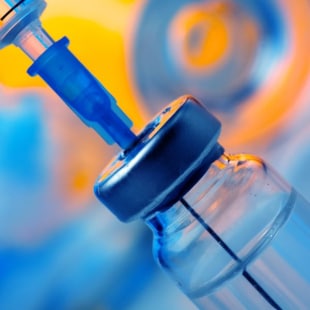The first half of 2021: vaccination campaigns boost sentiment
A combination of positive developments has led to overall improvement in business and consumer sentiment in advanced economies in the first half of the year. Vaccination campaigns that, in some cases had seen a slow start, were gathering speed. In combination with a declining number of new infections due to ongoing restrictive measures, this meant that the sanitary situation increasingly seemed under control in many countries, thereby allowing for an easing of Covid-19-related restrictions. Ongoing monetary policy support also played a role, through its support to financial markets and the easy access to financing at attractive conditions. Fiscal policy was a fourth factor, helped by cheap borrowing costs that increased the leeway of governments to support their economies.
Via international trade and capital flows, these favourable dynamics created international spillover effects and led to a significant improvement in the assessment of export orders. In the US, first quarter real GDP growth has been strong, but the second quarter should see an even better performance. The Eurozone has been lagging thus far, although after a contraction of GDP early in the year, growth should be positive in the second quarter, but still lower than in the US. This should change in the third quarter, with a particularly strong performance in the Eurozone expected to outpace the US.
For more information: Vaccination campaign, economic recovery and the Olympic Games - Japan sends mixed signals
“The Eurozone economy is bouncing back. From a macroeconomic perspective, the region is closing the gap on the losses accumulated since spring 2020 more quickly than expected just a few months ago. Unless a new wave of the pandemic breaks out due to the spread of Covid-19 variants, Eurozone GDP should return to pre-crisis levels by the end of the year. Accelerated vaccination campaigns and the gradual lifting of health restrictions are reducing uncertainty and boosting the confidence of economic agents. Consumers, who have adapted to restrictive health measures, are playing a key role. Despite these favourable dynamics, public policies are remaining cautious. From a monetary perspective, the European Central Bank recently expressed some optimism concerning the Eurozone’s capacity to rebound, although for the moment it is refusing to begin tightening monetary policy. As to fiscal policy, investors welcomed the European Commission’s first bond issue to finance the Next Generation EU recovery plan”
Louis Boisset, Economist BNP Paribas
Towards a peak in optimism, followed by slower growth
How good can it get? Elevated business survey results reduce the likelihood of further significant increases. In view of the optimism expressed by respondents, it is difficult to see how morale could continue to improve month on month. Moreover, statistically speaking, these surveys move within a certain bandwidth during a cycle and tend to move back to the long-term mean when levels are extremely low or high. The latter is presently the case. Although the fluctuation range can evolve over time, this historical behaviour should be kept in mind when assessing the outlook.
There are also fundamental economic reasons to expect somewhat slower growth in the latter part of this year and in 2022. Gradually, the ‘mechanical’ recovery in sectors such as leisure, hospitality, retail, which previously had suffered from restrictions and subsequently had benefitted from the unleashing of pent-up demand as restrictions were being lifted, are expected to lose steam. In addition, supply bottlenecks may end up weighing on growth in areas such as the construction sector. Significant price increases in certain sectors may also weigh on demand. Finally, there is increasing concern that new variants would lead to precautionary behaviour, thereby weighing on certain spending categories.
A prospect of slower yet sustained growth
Looking at advanced economies in general, the third quarter is expected to see the peak in quarter-over-quarter growth this year, with the increase in GDP slowing down thereafter. Nevertheless, over the remainder of the forecast horizon – which runs until the end of next year - quarterly growth is expected to stay above potential.
This means that the growth slowdown should be considered as a move from an exceptionally and unsustainably strong pace to a more normal, but still very good performance. The latter should be underpinned by several, mutually reinforcing factors. Better company profitability and rising capacity utilization should boost corporate investments and lead to the creation of new jobs. Hiring plans of companies have already picked up, which bodes well for the employment outlook. As a consequence households will feel less uncertain about the future – in particular about their employment prospects - which should support spending, all the more so considering the savings accumulated during the lockdowns. Fiscal policy should still provide support, in particular in the Eurozone, with the gradual deployment of the Next Generation EU funds. Finally, ongoing easy monetary policy will facilitate the financing of private and public spending.
The key question: which way will inflation go?
However, this favourable outlook for the real economy – activity, demand, employment - comes with challenges for financial markets. Slower GDP growth makes it more difficult for listed companies to surprise to the upside in terms of earnings. Historically, the frequency of earnings upgrades by financial analysts declines when business surveys start to soften. Another issue is what happens to inflation, in particular in the US.
In the US
The increase in the consumer price index has spiked to 5.4% on the back of base effects – last year prices were subdued in many sectors due to the drop in GDP and lockdowns - and imbalances between supply and demand. The percentage of manufacturing companies reporting higher input prices is getting close to record levels. The Federal Reserve argues this should be a transitory phenomenon considering that demand growth should slow and supply should pick up, although, based on the Survey of Economic Projections, the number of FOMC members advocating a rate hike next year has increased.
Rather than causing turmoil in the bond market, this has actually reinforced the credibility of the central bank, witness the recent decline in breakeven inflation. Nominal bond yields have also moved lower in recent weeks as real-time estimates of real GDP growth started pointing towards less strong growth. Nevertheless, we should expect that over the coming months, the market sensitivity to growth and inflation data will be higher than normal in view of what these data would imply for the Fed’s policy stance.
In Europe
In the eurozone, headline inflation of 1.9% in June has brought us close to the ECB’s target but core inflation of 0.9% remains significantly below the objective and underpins the rationale for the ECB to maintain a very accommodative policy. The outcome of the strategy review has reinforced this conclusion, considering that target inflation is now set at 2%, rather than the ‘close to but below 2%’ used thus far. ECB policy will continue to be centered around its asset purchases and forward guidance, in order to generate a lasting pick-up in inflation towards its target. Given the expected developments in terms of growth and inflation, the net purchases of the pandemic emergency purchase programme (PEPP) should stop at the end of March 2022 but the monthly volume under the traditional asset purchase programme should be increased on that occasion in order to avoid market disruption.
A diverse picture in developing economies
The situation is very heterogeneous in developing economies. Real GDP growth continued to slow in the first quarter whilst remaining strong. Exports were still the main growth engine, notably in Asia. Companies are rebuilding inventory, which is generating pricing pressures on commodities and raising transport costs. Private domestic demand is also picking up, but in a more hesitant manner as shown in household confidence indicators. Moreover, risks are tilted to the downside, due to the worsening pandemic situation in several countries and the widespread upsurge in inflation, driven by the price of oil and agricultural commodities. This poses a challenge for central banks considering that policy tightening at this point in the cycle risks disrupting the recovery of domestic demand, and investment in particular.
For more information: Emerging Countries: a still fragile recovery
“The recovery trend is confirmed in emerging markets (EM) yet remains fragile. Household confidence indicators are lagging behind those of business sentiment. Reasons are new waves of contamination, acceleration in inflation and impoverishment caused by the pandemic.”
François Faure, Senior Economist, BNP Paribas







